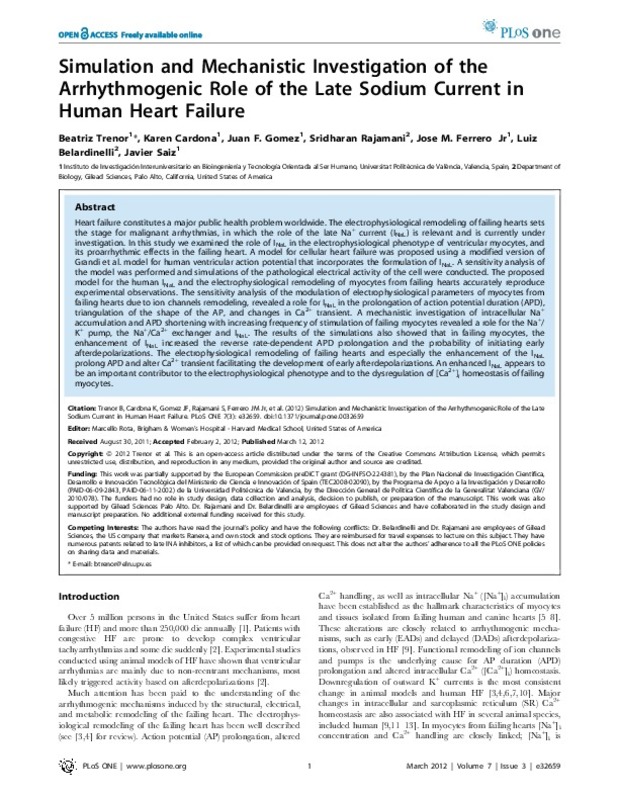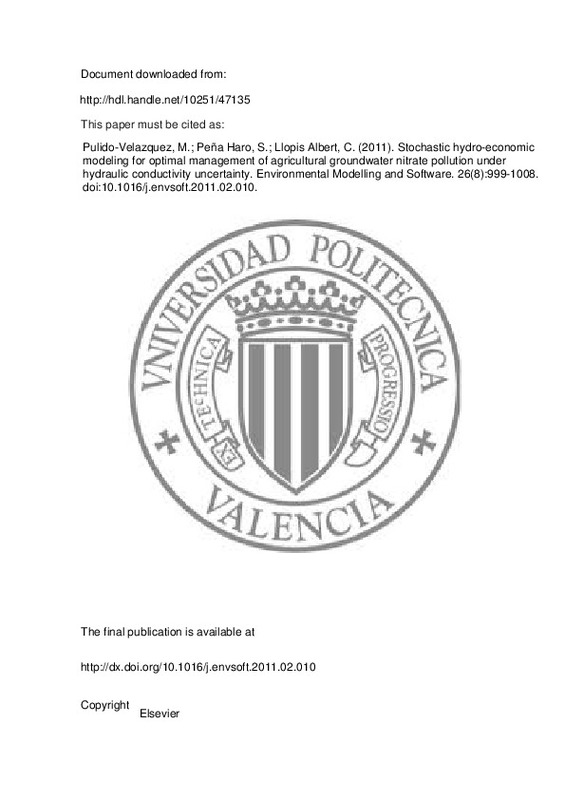Dux-Santoy Hurtado, L.; Sebastián Aguilar, R.; Felix-Rodriguez, J.; Ferrero De Loma-Osorio, JM.; Saiz Rodríguez, FJ. (2011). Interaction of Specialized Cardiac Conduction System With Antiarrhythmic Drugs: A Simulation Study. IEEE Transactions on Biomedical Engineering. 58(12):3475-3478. https://doi.org/10.1109/TBME.2011.2165213
Por favor, use este identificador para citar o enlazar este ítem: http://hdl.handle.net/10251/140968
|
Título:
|
Interaction of Specialized Cardiac Conduction System With Antiarrhythmic Drugs: A Simulation Study
|
|
Autor:
|
Dux-Santoy Hurtado, Lydia
Sebastián Aguilar, Rafael
Felix-Rodriguez, Jose

 Ferrero De Loma-Osorio, José María
Ferrero De Loma-Osorio, José María

 Saiz Rodríguez, Francisco Javier
Saiz Rodríguez, Francisco Javier
|
|
Entidad UPV:
|
Universitat Politècnica de València. Departamento de Ingeniería Electrónica - Departament d'Enginyeria Electrònica
Universitat Politècnica de València. Instituto Interuniversitario de Investigación en Bioingeniería y Tecnología Orientada al Ser Humano - Institut Interuniversitari d'Investigació en Bioenginyeria i Tecnologia Orientada a l'Ésser Humà
|
|
Fecha difusión:
|
|
|
Resumen:
|
[EN] The use of antiarrhythmic drugs is common to treat heart rhythm disorders. Computational modeling and simulation are promising tools that could be used to investigate the effects of specific drugs on cardiac ...[+]
[EN] The use of antiarrhythmic drugs is common to treat heart rhythm disorders. Computational modeling and simulation are promising tools that could be used to investigate the effects of specific drugs on cardiac electrophysiology. In this paper, we study the multiscale effects of dofetilide, a drug that blocks IKr, from cellular to organ level paying special attention to its effect on heart structures, in particular the specialized cardiac conduction system (CCS). We include a model of the CCS in a patient-specific anatomical ventricular model and study the drug effects in simulations with and without a CCS. Results confirmed the expected effects of dofetilide at cellular level, increasing the action potential duration, and at organ level, prolonging the QT segment. Notable differences are shown between models with and without the CCS on action potential duration distributions. These techniques show the importance of heart heterogeneity and the global effects of the interaction of drugs with cardiac structures. © 2006 IEEE.
[-]
|
|
Palabras clave:
|
Action potential duration (APD)
,
Cardiac conduction system (CCS)
,
Cardiac electrophysiology
,
Drug modeling
,
Action potential durations
,
Antiarrhythmic drug
,
Cardiac structure
,
Cellular levels
,
Computational modeling and simulation
,
Conduction systems
,
Dofetilide
,
Drug effects
,
Expected effects
,
Global effects
,
Multiscales
,
Rhythm disorders
,
Simulation studies
,
Computer simulation
,
Electrophysiology
,
Heart
,
Neurology
,
Drug interactions
,
Article
,
Drug effect
,
Heart muscle conduction system
,
Heart ventricle
,
QT prolongation
,
Simulation
,
Action Potentials
,
Anti-Arrhythmia Agents
,
Diffusion Tensor Imaging
,
Drug Design
,
Electrocardiography
,
Heart Conduction System
,
Heart Ventricles
,
Humans
,
Models, Cardiovascular
,
Phenethylamines
,
Sulfonamides
|
|
Derechos de uso:
|
Cerrado |
|
Fuente:
|
IEEE Transactions on Biomedical Engineering. (issn:
0018-9294
)
|
|
DOI:
|
10.1109/TBME.2011.2165213
|
|
Editorial:
|
IEEE-INST ELECTRICAL ELECTRONICS ENGINEERS INC
|
|
Versión del editor:
|
https://doi.org/10.1109/TBME.2011.2165213
|
|
Código del Proyecto:
|
info:eu-repo/grantAgreement/GVA//GV%2F2010%2F078/
info:eu-repo/grantAgreement/MICINN//TEC2008-02090/ES/MODELO MULTI-ESCALA DEL CORAZON. APLICACION EN LA PREVENCION, DIAGNOSTICO Y TRATAMIENTO DE ARRITMIAS CARDIACAS/
info:eu-repo/grantAgreement/UPV//PAID-06-09-2843/
info:eu-repo/grantAgreement/MICINN//BES-2009-016071/ES/BES-2009-016071/
|
|
Agradecimientos:
|
This work was supported in part by the Ministry of Science and Innovation, TEC-2008-02090 (FPI grant BES-2009-016071), in part by the Programa de Apoyo a la Investigacion y Desarrollo (PAID-06-09-2843) de la Universitat ...[+]
This work was supported in part by the Ministry of Science and Innovation, TEC-2008-02090 (FPI grant BES-2009-016071), in part by the Programa de Apoyo a la Investigacion y Desarrollo (PAID-06-09-2843) de la Universitat Politecnica de Valencia, and in part by the Direccion General de Politica Cientifica de la Generalitat Valenciana (GV/2010/078). Asterisk indicates corresponding author.
[-]
|
|
Tipo:
|
Artículo
|






![[Cerrado]](/themes/UPV/images/candado.png)




